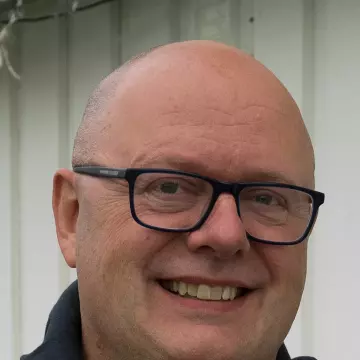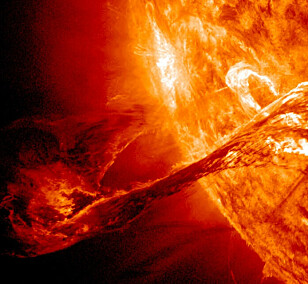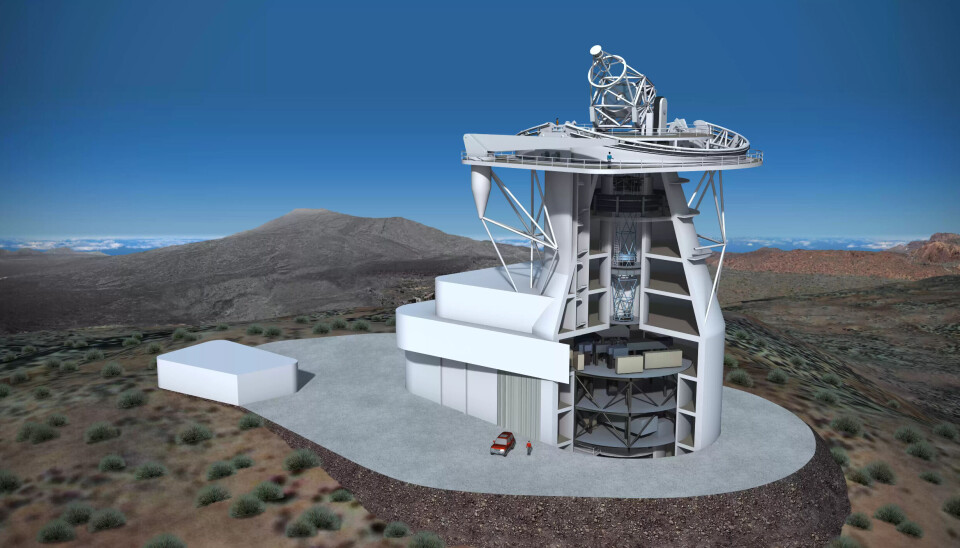
Europe collaborates on solar telescope to the tune of 200 million euros
It will be almost three times as large as its predecessor. The new giant telescope will teach us what happens in the magnetic field of the sun.
The University of Oslo is part of the team of researchers from 16 countries who are collaborating on a new solar telescope in the Canary Islands. The 44-metre-high telescope will have a mirror that is 4.20 metres in diameter and will be put into operation in 2029.
By comparison, today's European solar telescope has a 1.50 metre mirror.
The magnetic field
“When we try to understand more about the sun, it’s pure basic research. But solar storms and other things also have an influence on electronics and satellites, for example. We’d like to understand what happens especially in the outer part of the sun,” says Mats Carlsson, a professor and head of the Rosseland Centre for Solar Physics.
The sun is made of plasma. NASA describes plasma as a gas-like state where electrons and ions create a super-hot mixture of detached particles with electrical charge. When the charged particles move, they create a magnetic field.
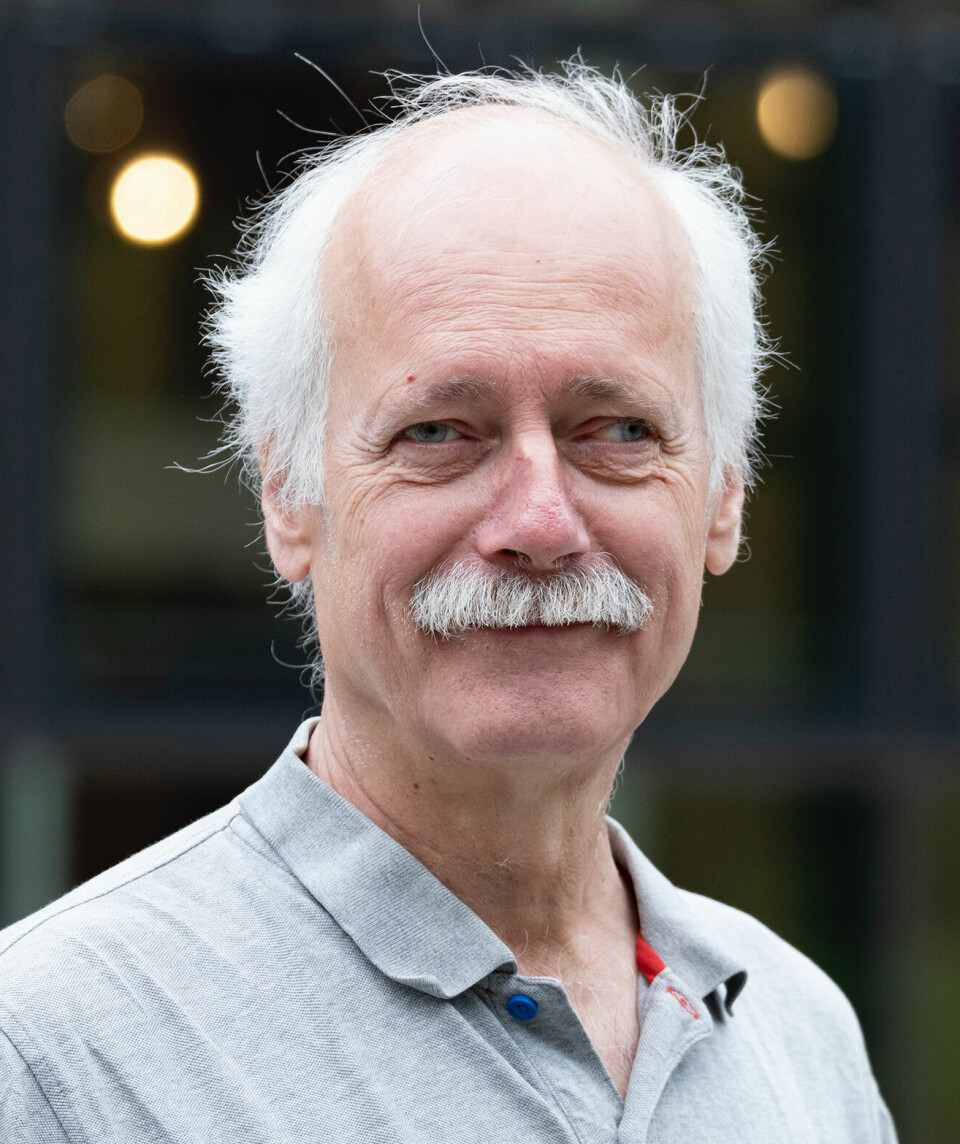
Like stretching an elastic band
Carlsson compares what the telescope is supposed to monitor to a rubber band snapping:
“Movements inside the sun push around this magnetic field in such a way that energy is created – a lot like a rubber band that is twisted and twisted so that it eventually breaks and releases the energy.”
“You can get nice pictures of the explosions, but it’s really difficult to measure what the magnetic field looks like. That requires very high accuracy, especially further up in the atmosphere where things happen,” he says.
For that, a telescope needs to be large enough to collect enough light particles – called photons – for the measurements to be accurate. Carlsson characterizes the European solar physics environment as very strong. Europe has come together on the plans for the European Solar Telescope (EST).
Waiting for funding
“Now we’ve arrived at the point where we have to obtain the funding for construction,” he says.
What’s difficult is that all the countries have different ways of allocating money for projects like this. Some countries take a long time, others take even longer.
The host country Spain is the only country that has given the final go ahead to grant funding. The telescope will be built on La Palma.
“Spain will be responsible for 25 per cent of the project. They have determined that it is pure profit for them: the return in the form of building contracts and local infrastructure will come to more money than they put in,” says Carlsson.
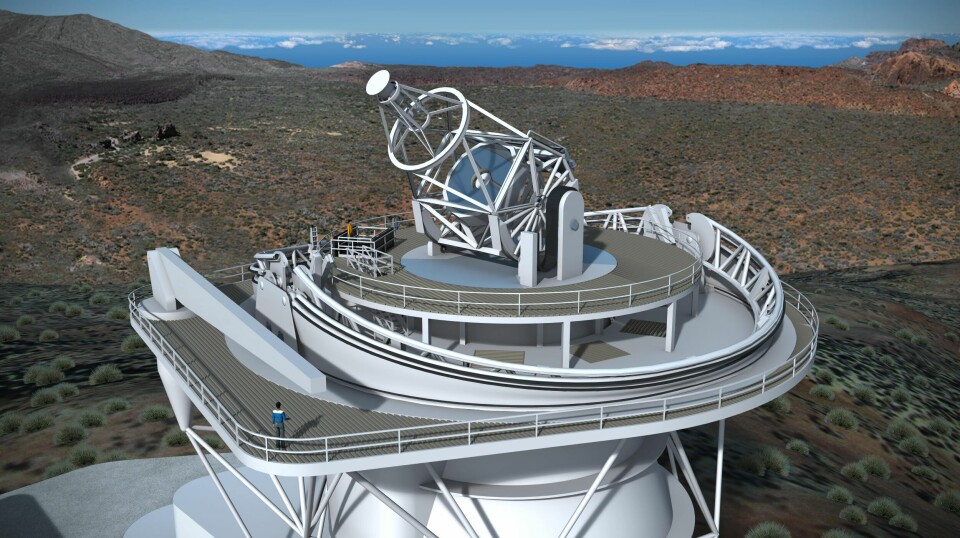
200 million
“Here in Norway we submitted an application two years ago, but the Research Council of Norway believed that the project wasn’t quite ready for funding. We’ll be sending a new application in the autumn,” he says.
The entire project is estimated to come to 200 million euros, of which Norway is to finance around five per cent.
On the research side, Carlsson points out that Norway is far ahead in analysing large amounts of data. He hopes that this will be one of the areas the Rosseland Centre will be able to contribute to.
Bigger on the ground
Building such a telescope in space has been proposed several times, but the cost would be 100 times more expensive than building it on the terra firma.
“It’s important to have good ground telescopes to complement space telescopes. Ground- and space-based telescopes can do two different things,” says Pål Brekke.
Brekke is a senior advisor for space science at the Norwegian Space Centre. He works with the other type of telescopes, the ones that are out in space.
“The ground telescopes can be built much larger. The size of mirrors and equipment is unlimited when they don’t need to be lift them into space. Today's modern telescopes can correct for most disturbances caused by the atmosphere,” says Brekke.

Norway ‘best in the world’
What space telescopes can do that ground-based telescopes cannot is show the wavelengths that never reach the ground. Ultraviolet rays and X-rays are among the wavelengths that the atmosphere protects against.
“Carlsson and his group are world leaders in modelling in order to understand the physics. They make complicated models of the various structures on the sun to understand the physics and to explain what we’re seeing in the images. Norway is the best in the world at this,” says Brekke.
Translated by: Ingrid P. Nuse
Reference:
Carlos Quintera Noda, Mats Carlsson et.al.: The European Solar Telescope. Astronomy & Astrophysics, 2022.
———







